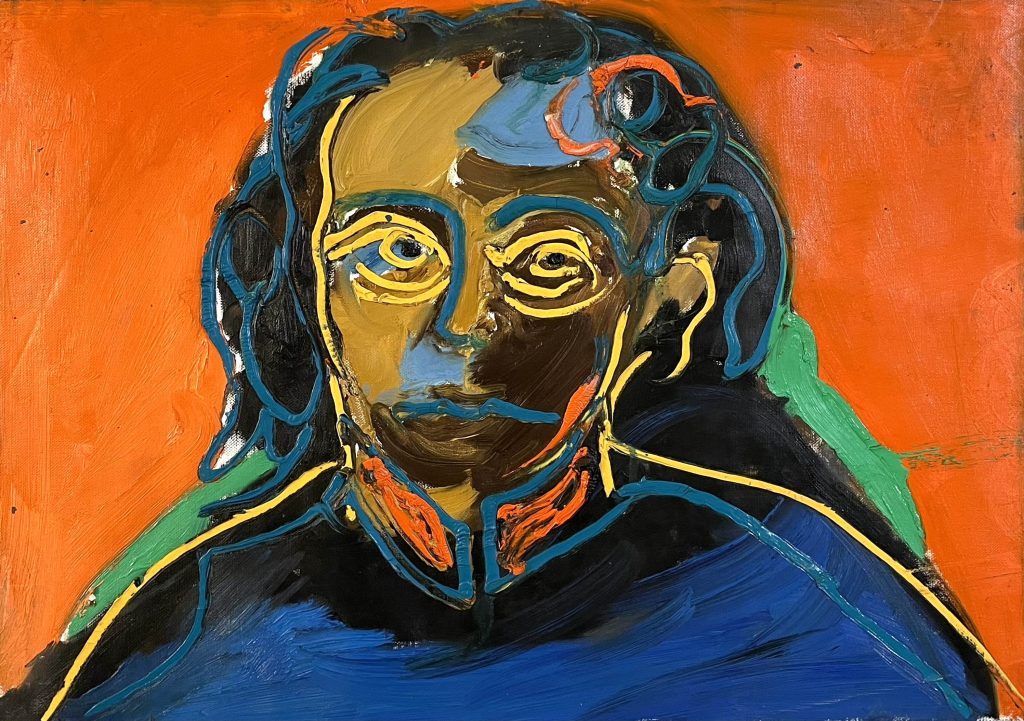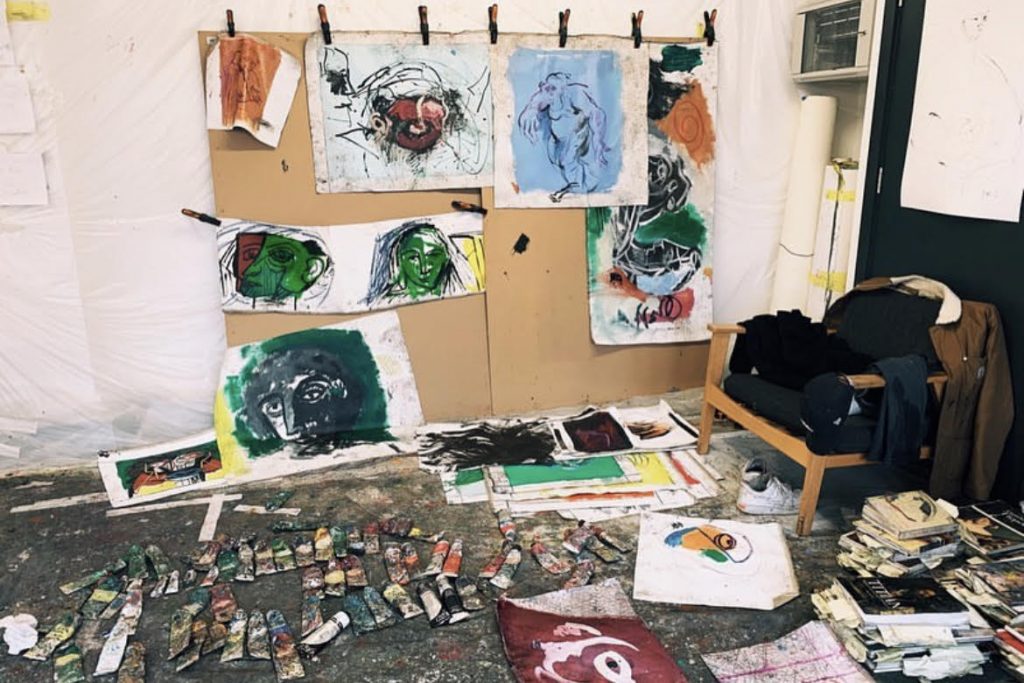Painter Marc Guiragossian Explains Why He Lets His Unconscious Drive His Creative Practice
It’s no surprise that Marc Guiragossian became a painter. Grandson of the famous neo-expressionist painter Paul Guiragossian and son of the artist Emmanuel Guiragossian, Marc Guiragossian belongs to a line of talented artists who inspired him to create.
the 26 years the paintings evoke Sigmund Freud’s analysis of the unconscious through a symphony of vivid color, gestural brushstrokes and art historical references. For Guiragossian, the evolution of art is not a linear process, but an inexhaustible exchange between aesthetic moments of the past and the present.
At Artnet’s Buy Now sale, live until May 4, we spoke to Guiragossian about his creative upbringing and how he developed his own unique style.
Installation view of sitting harlequin2019. Available now for immediate purchase in Buy Now: Marc Guiragossian.
Throughout your life, you have been surrounded by talented painters. When did you realize that you also wanted to become a professional artist?
I was surrounded by many artists. It was completely normal for me that everyone around me was creative. I have been in love with art since I was a child and I knew very early on that it was my destiny. There has not been a time in my life when I had to think about choosing art as a profession. Instead, I would wonder what it would be like not to do art as a profession.
How did your grandfather, Paul Guiragossian, influence your artistic practice?
My grandfather Paul and my father Emmanuel influenced me enormously. As a child, I grew up looking at his large, explosive and colorful paintings. His color palette has always impressed and influenced me, and still does today. I was wondering, how can someone be so free when painting? How can someone without conscious effort make something so beautiful just by an emotion, a feeling alone. I’ve learned that I’m more excited about art that comes from intuition, from within, like Sumerian rock drawings.

Marc Guiragossian, head of a man (2019). Available in Buy Now: Marc Guiragossian.
Can you tell us more about your creative process? How does a painting go from an idea to a finished product?
I would love to talk about my creative process but for me it spoils all the joy of looking at my works. I mainly focus on the unconscious and have no idea how an idea becomes a finished product. It just happens.
Do you create your portraits from memory, or do you work from reference images or other artwork?
I sometimes create from memory and sometimes I create from reference. I am very interested in surrealism and the unconscious. Sigmund Freud said that the unconscious is the main source of human behavior. He also said that our experiences and feelings are powerfully influenced by our past. I believe some of the answers I get in life come from memory painting. All the answers we seek are within us, it’s just a matter of how you can express it and how you can bring it out of you. I took a lot of references from other artists, like the self-portraits of Rembrandt, Hans Holbein, El Greco and the rock art of Lascaux.
Why paint and not another medium? What type of paint do you work with and why?
The first thing I fell in love with was painting; it stuck with me. My father also introduced me to sculpture, which I will explore more in the future. I mainly work with oil as it is much more vibrant and has a lot more tones than acrylic. But if you ask any experienced artist, they work with anything that has pigment in it.

A glimpse of Guiragossian’s workshop. Courtesy of Marc Guiragossian.
What place does color play in your artistic approach? How do you select the colors for each work?
Color plays a major role in my artistic process. Each color has its own meaning and feeling for me, I don’t know why, but it’s embedded in my subconscious. It’s a difficult question to answer, because the colors are just in me, I do what my intuition tells me, what my instinct tells me.
You see painting as a form of dialogue, through which you can converse with artists of the past and peers of today. How do you approach this conversation in each of your works?
I consider painting as a dialogue with the past and the present. I always try to capture the essence of what Rubens or Tintoretto were trying to represent. Much of what artists of the past have talked about is still relevant today. Many artists have taken the same ideas and reproduced them in their own way. A good example of this are the paintings of Venus created by Sandro Botticelli in The birth of Venus, and that of Manet Olympia.

Marc Guiragossian, Untitled (2019). Available in Buy Now: Marc Guiragossian.
Which artist in the canon of art history has most influenced your own practice? Which of your contemporaries inspires you the most?
There are so many artists who have influenced my practice. It started with Leonardo da Vinci, when I first saw his grotesque drawings of deformed heads. I was also influenced by the painting of Peter Paul Rubens The Drunken Hercules in the Zwinger museum when I first moved to Dresden, the work of Goya Los Caprichos engravings, the whole series of self-portraits by Rembrandt and the freedom of Picasso to invent his own world.
If you could be born into any art movement, what would it be?
I wish I had been born during the Renaissance. Just imagine watching Titian paint The flaying of Marsyas.
Don’t miss your chance to collect one of Guiragossian’s dynamic and surreal paintings. Buy now: Marc Guiragossian is online until May 4 and all works are available for immediate purchase.
Follow Artnet News on Facebook:
Want to stay one step ahead of the art world? Subscribe to our newsletter to receive breaking news, revealing interviews and incisive reviews that move the conversation forward.